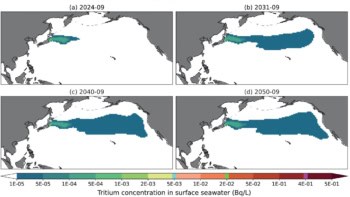
In 2014 California introduced the Sustainable Groundwater Management Act (SGMA) into state law to help manage the conflict between ground and surface water. But updating legal structures to accommodate evolving scientific knowledge involves far more than simply rewriting statutes, according to researchers in the US.
“Understanding the interconnections between groundwater and surface water doesn’t make those conflicts go away,” says Dave Owen of University of California, Hastings. “But at least acknowledging those interconnections in law puts legal decision-makers in a position to start managing conflicts, rather than just letting them play out without any legal oversight.”
The Sustainable Groundwater Management Act governs the extraction of groundwater in order to protect beneficial uses of surface water. Before that, an artificial distinction between surface and groundwater meant that, while the use and quality of surface water was monitored by local, state and federal agencies, groundwater was subject only to patchy and inconsistent local oversight.
Extending the law to recognise the connection between ground and surface water should help prevent the effects of excessive groundwater use, including the depletion of lakes and streams, damage to ecosystems, and shortages of irrigation water for farmers. That, at least, is the theory; achieving the aim is more complicated.
Owen and colleagues investigated the challenge of correcting a legal framework that had grown organically from disparate policies and practices.
The researchers talked to experts from state government, academia and non-governmental organizations, to analyse the complex interaction of science and policy. Their analysis should serve as a roadmap for future legislation in California.
To map out the legal landscape that scientists and policymakers must negotiate when considering new legislation, Owen and colleagues created two categories: policy interfaces with written law, and interfaces with institutions and practices.
Difficulties with written law arise because any given piece of legislation has limits to its scope, so its edges cannot help but rub up against existing laws. When current policies conflict with one another, the introduction of additional laws does not always make things more manageable.
In California, for example, water usage rights have traditionally been granted according to both land ownership and historical precedent. The Sustainable Groundwater Management Act does not resolve this discrepancy, so potential for tension and uncertainty still exists, with the added possibility of conflict relating to matters that fall under the new act. What’s more, many parties have considerable interests in sticking with the old ways of doing things.
“Groundwater users generally would prefer to keep pumping without a new source of legal restraint,” says Owen. “After all, they wouldn’t be pumping groundwater if they weren’t making money from doing so. Often their interest is backed by years of investment in farming operations, including, increasingly, growth of perennial crops that can’t just be watered in the wet years.”
Institutional interfaces
The law consists of more than the text that appears in statute books; legal reality is also embodied in the institutions that interpret the law and the agencies that monitor and enforce its application. The success of these bodies often relies on expertise and extensive networks that have developed over time, so they cannot be replaced or repurposed overnight.
Updating a legal system composed of many interdependent parts will always be a lengthy and complex process, and the involvement of parties with mutually exclusive interests means that it will also be fraught with conflict.
Owen and colleagues reported their findings in Environmental Research Letters (ERL).



